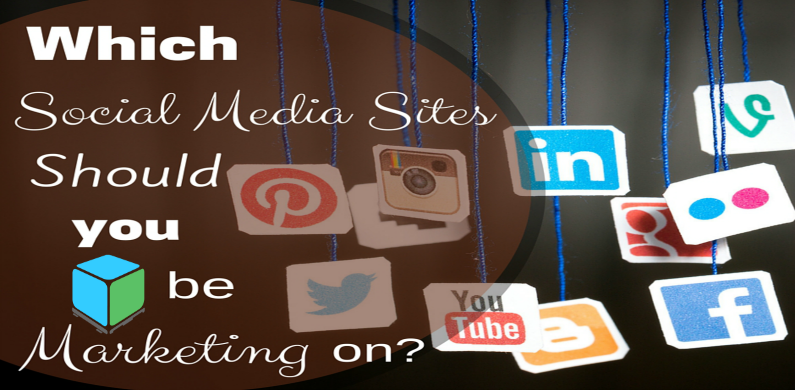Social media is great for marketing your business or building your network. But with so many options, it’s hard to know which site you should be utilizing for your marketing efforts. Different social sites speak to different audiences, in different ways, and what works for one social media site may not work for another.
So, which social media sites should YOU be marketing on? We break them down for you below.
Facebook was originally a friendship based networking site. When Facebook was launched over 10 years ago, it was service to connect college students. Now it’s open to anyone in the world and has over 1 billion users. While Facebook is still friendship based, it is increasingly business friendly. One big reason to be on Facebook is the sheer number of users. Most people you know or want to connect with are already on Facebook. While promoting your business on Facebook can sometimes be tricky (people can easily hide what they don’t want to see) the sheer number of people on the network make it a smart choice to do some marketing.
LinkedIn was built for business, advancing in your career, and making business connections. Because of these reasons, it makes sense for you to market and build your network on LinkedIn. LinkedIn is a fast growing social media network, but still has far fewer users than Facebook. Also users do not log in to LinkedIn or access their page as frequently as they visit Facebook. Use LinkedIn to build a strong network, but know your marketing may not be seen by as many people as content on Facebook will be.
Twitter has nearly 300 million monthly users and the best part is that you don’t have to be friends with them or have an established connection for them to see your marketing content. Thanks to the 140 character limit and a fast moving feed, Twitter takes minimal time investment. Twitter is a great place to market your business and test strategies. One tip: Do research into the right hashtags to make sure your content is seen by the most people.
If your business is photo-friendly, Instagram is a great choice. This increasingly popular network relies on hashtags just like Twitter in order for users to find content. Photo-friendly businesses like hair salons, doggie daycare, or travel services thrive on Instagram. If your company isn’t photo-friendly try to get creative in your use of Instagram. Motivational quotes over a fun background are often popular on Instagram and can relate to many business areas. Think of ways they can apply to you.
Google+
You may have heard that Google+ is dead, and that may be partially true. But thanks to the popularity and dominance of the Google search engine, it’s still important for your business to be on Google+. To market on Google+, make sure your page has all the important business information like address, hours, and even some photos. Direct your customers to leave reviews on Google+ as well. This way, when someone searches for your business or a business service like yours, your results will be favored by Google and appear higher up on the search results.



